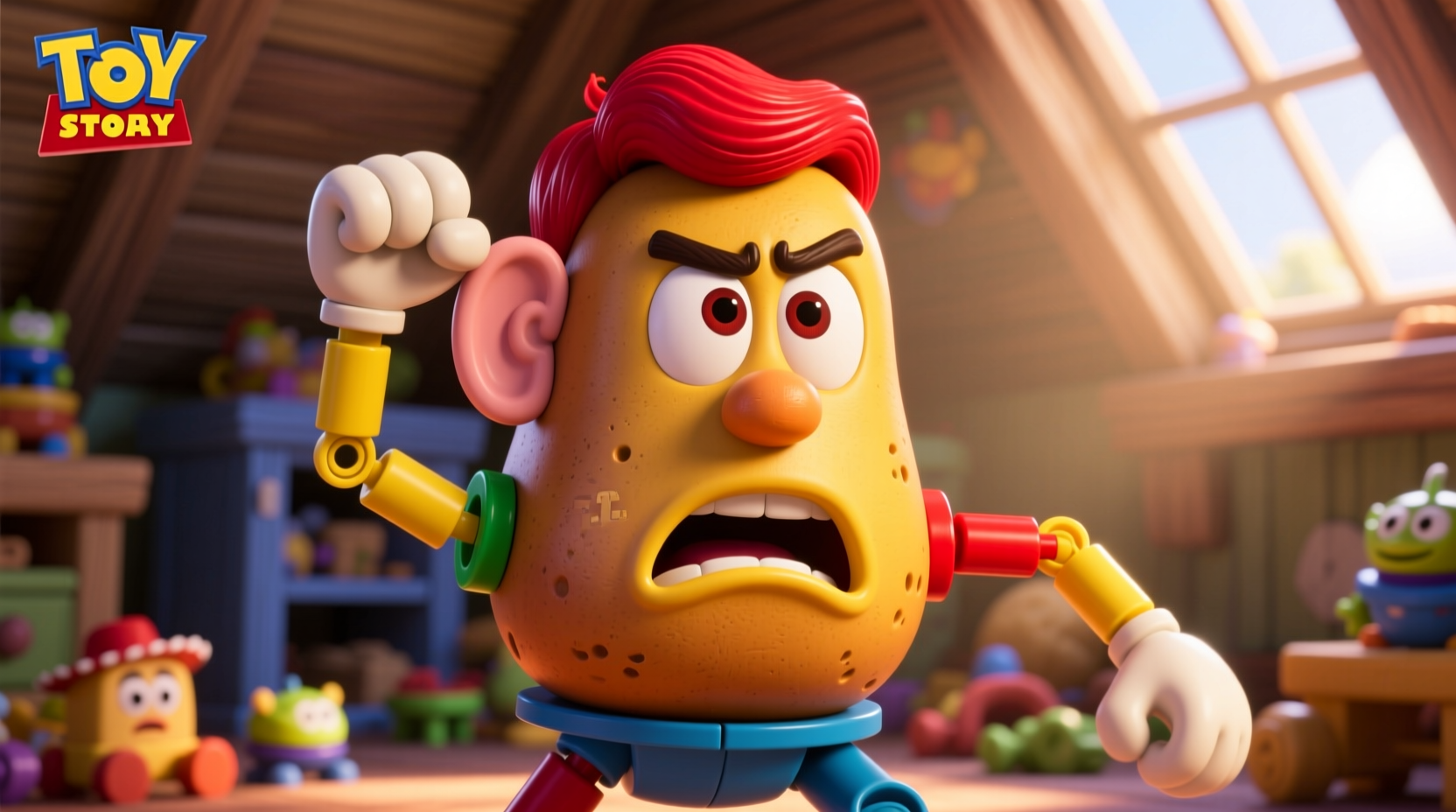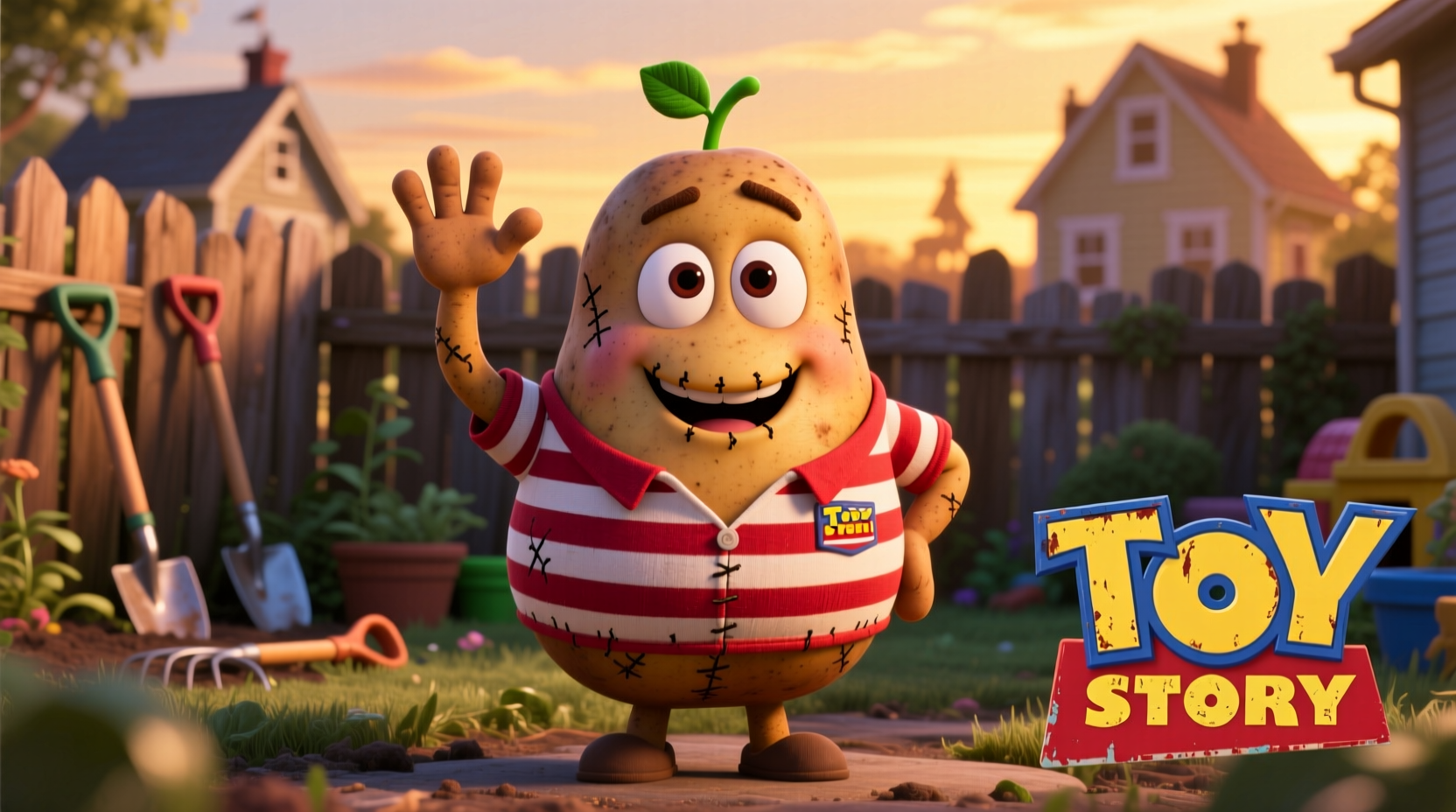The Cultural Journey of Toy Story's Potato Icon
When you think of potato from toy story, you're undoubtedly picturing Mr. Potato Head—the witty, detachable-part character who's been entertaining audiences since the 1995 original film. Unlike most toys in Andy's collection, Mr. Potato Head wasn't originally designed as a movie character but adapted from an existing toy that had been in children's hands for over four decades before appearing on screen.
From Toy Shelf to Silver Screen: A Historical Timeline
| Year | Milestone | Significance |
|---|---|---|
| 1952 | Hasbro releases Mr. Potato Head | First toy requiring parental assembly (original version sold as pieces without plastic body) |
| 1995 | Toy Story premieres | Mr. Potato Head becomes first toy character to transition from physical toy to CGI animation |
| 2010 | Toy Story 3 releases | Character's emotional depth expands as he faces potential incineration |
| 2019 | Toy Story 4 debuts | Mr. Potato Head receives his most developed character arc with romantic subplot |
Why Mr. Potato Head Resonates with Audiences
Unlike many toy story potato character facts that focus solely on design, the enduring appeal of Mr. Potato Head stems from his relatable personality traits. Film analysts at the University of Southern California's School of Cinematic Arts note that Mr. Potato Head represents the "everyman" archetype—flawed but loyal, sarcastic but caring. His detachable features serve as visual metaphors for emotional vulnerability, making him unexpectedly profound among toy story characters ranked by popularity.

Evolution of Design Across the Film Series
The mr potato head toy story evolution demonstrates Pixar's commitment to authenticity. In the first film, animators studied actual Hasbro toys to replicate how light reflected off plastic components. By Toy Story 4, the character received significant visual updates including more expressive eyes and smoother feature movement. Interestingly, Pixar's technical team developed new animation software specifically to handle Mr. Potato Head's detachable parts—a challenge documented in Pixar's official research publications.
Voice Acting Legacy and Transition
Comedian Don Rickles provided Mr. Potato Head's distinctive voice for the first three films, creating an irreplaceable comedic rhythm. After Rickles' passing in 2017, his brother Jim Hanks (Tom Hanks' sibling) seamlessly continued the role in Toy Story 4 by studying Rickles' delivery patterns. This mr potato head voice actor change represents one of animation's most successful voice transitions, preserving the character's essence while adapting to new storytelling needs.
Cultural Impact Beyond the Films
Mr. Potato Head's influence extends far beyond potato head toy story movie appearances. The character has become shorthand for modular design concepts in engineering education, with MIT's Media Lab using him as a teaching tool for prototyping systems. Additionally, his detachable nature has made him a popular subject in disability studies discussions about adaptability and reconfiguration. According to a 2022 study published in Animation Journal, Mr. Potato Head ranks among the top five most analyzed animated characters in academic literature regarding embodiment theory.
Practical Insights for Toy Story Enthusiasts
For collectors seeking authentic mr potato head toy story merchandise, understanding production timelines proves valuable. Hasbro released special edition toys coinciding with each film's premiere, identifiable by specific markings:
- Toy Story 1 (1995): Original release features simpler facial expressions
- Toy Story 3 (2010): Includes "Lotso" scent accessory
- Toy Story 4 (2019): Features interchangeable romantic accessories
These details help distinguish genuine collectibles from reproductions—a crucial consideration given that rare Toy Story-era Mr. Potato Head toys have sold for over $1,200 at auction according to Heritage Auctions records.











 浙公网安备
33010002000092号
浙公网安备
33010002000092号 浙B2-20120091-4
浙B2-20120091-4